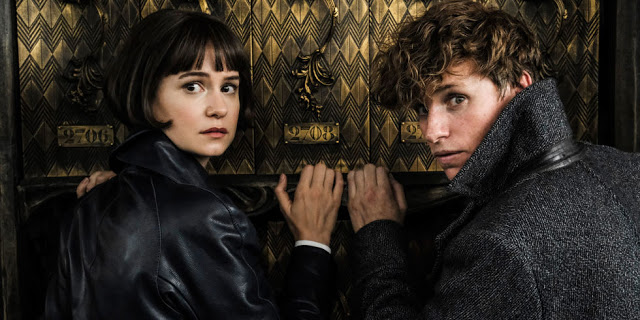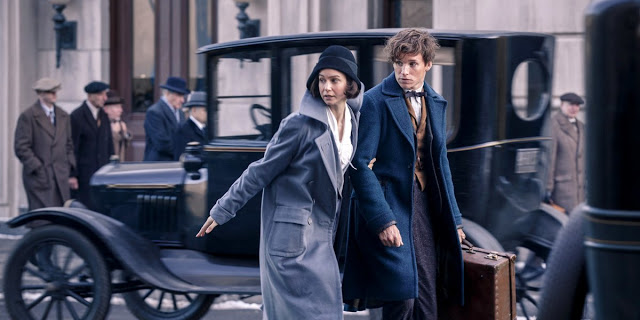Fantastic Beasts: The Crimes of Grindelwald: Setting the Magical Table, One Spell at a Time
There is plenty of spell-casting and wand-waving in Fantastic Beasts: The Crimes of Grindelwald, the second in a planned five-film series from director David Yates and writer J.K. Rowling. Whether there is much genuine magic is another matter. On occasion, Yates’ visual flair and Rowling’s boundless imagination combine to show you something truly wonderful and dazzling: winged horses pulling a carriage through lashing rain; a lionlike creature with wide eyes and a whirling pink tail storming through Paris; a circle of brilliant-blue flames walling off an army of advancing soldiers. Most of the time, however, the magic on display is of a more earthbound sort, akin to a charlatan’s rudimentary illusions. The Crimes of Grindelwald is very loud and busy, but its noise and energy seem designed to distract you from what’s really happening. It’s the classic shell game writ large and in CGI; focus on the blurs of motion and the blasts of sound, and you can’t see the movie’s fundamental emptiness.
Among the many achievements of Rowling’s Harry Potter novels (and their filmed adaptations) was their deft balance between—to borrow terms from TV criticism—the episodic and the serialized; each told a compelling story with a discrete dilemma and a particular villain while also continually developing the central characters and steadily progressing toward an ultimate, good-vs.-evil showdown. The Crimes of Grindelwald, by contrast, seems entirely invested in setting the table for future installments, cautiously arranging chess pieces without moving them anywhere interesting. Following a reasonably suspenseful, somewhat indiscernible prologue in which the dastardly Gellert Grindelwald (Johnny Depp, perfectly fine) escapes from the custody of magical law enforcement in the night sky amid a thunderstorm, the movie begins with Grindelwald poised to topple the social wizarding order. It ends in pretty much the same place. The meaty stuff, it appears, will be served later; this is just a lengthy appetizer. Read More


